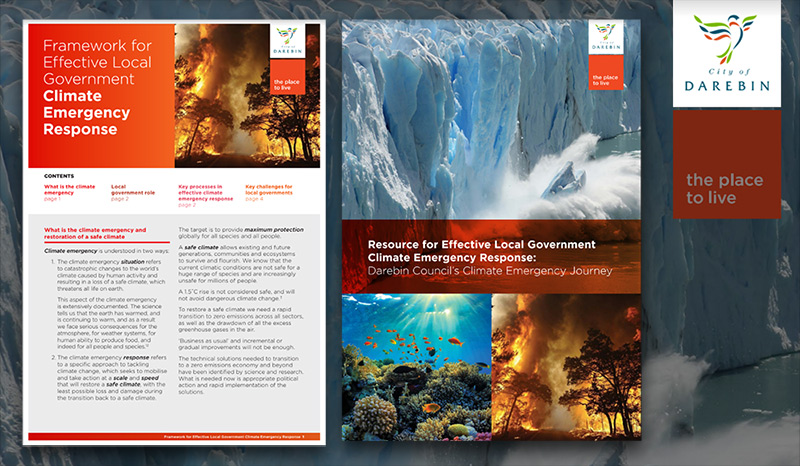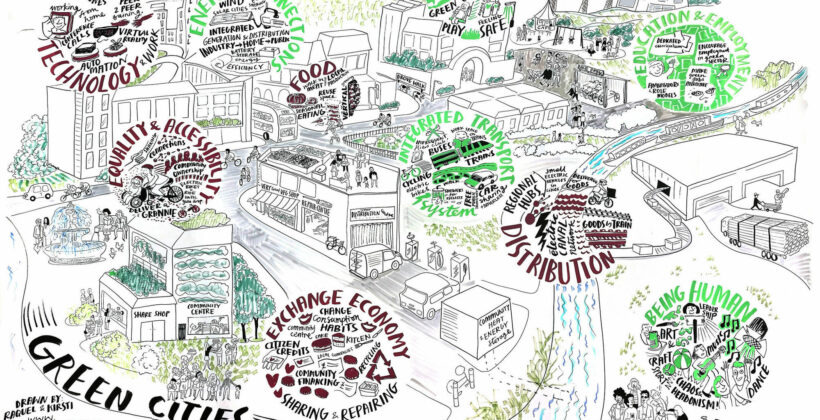Across the world, national and local governments are declaring a climate emergency on the back of dire warnings from UN scientists about the need for urgent and far-reaching action.
As of November 2019, 1,191 jurisdictions in 24 countries representing over 290 million citizens (including 70 percent of the UK population for example, and the UK Parliament itself) had declared a climate emergency. These declarations, taking place at every level of government, represent a protest against the climate path we are on. There is now a challenge to turn them into programmes of action to match the necessary pace and scale of change needed.
Australia: wild fires and wild politics
Australia is a source of global heating and, with worsening extreme weather and wildfires, a victim of it. Australia’s Sydney Morning Herald reported that its domestic & export-embedded carbon emissions represented about 3.6 per cent of annual total global emissions (2016), in other words significant for a country with a relatively small population. Research group, CSIRO, found in it’s State of the Climate report that, “there has been a long-term increase in extreme fire weather and in the length of the fire season across large parts of Australia since the 1950s”. Cool season rainfall has dropped since the 1990s, and 8 out of 10 of its warmest years on record have happened since 2005. Yet action on rapid transition is still politically contested in the country, with the nation’s prime minister at odds with climate scientists and local authorities wanting to pursue action.

Darebin County Council, for example, has produced a pack of resources to help councils develop turn concern and statements about the climate emergency into action plans to respond.
- Framework for Effective Climate Emergency Response
- Resource for Effective Local Government Climate Emergency Response
More general advice for local authorities has been put together by think tank, The National Centre for Climate Restoration (Breakthrough) which produced the briefing: ‘Understanding climate emergency and local government’
United Kingdom: Climate Emergencies and Local Green New Deals
The movement for local authorities to declare climate emergencies is very recent and has grown rapidly. It has taken root strongly in the United Kingdom where more than 70 per cent of the population is thought to live in areas where an emergency has been declared. The UK parliament, although not the government, has declared a climate emergency. This shift has been a triumph of awareness raising and winning commitment, but turning those declarations into practical plans for rapid transition is an even bigger challenge. Fortunately ever more resources are becoming available to help. Here are a few currently available:
For an overarching vision – A civic action plan: building the 1.5 degree, socially-just city – is available, and its author, academic and Alliance member, Paul Chatterton, summarised it for the Rapid Transition Alliance here.
Campaign group Friends of the Earth, another Alliance member, has an approach to help its broad base of members and supporters to work with councils to develop and adopt Climate Action Plans.
The Centre for Alternative Technology (CAT) has a new Zero Carbon Britain Hub and Innovation Lab to provide support for support for climate emergency action planning.
In a similar vein, the Centre for Sustainable Energy (CSE) has announced a Climate Emergency Support Programme for local authorities which will ‘provide free strategic advice and practical support to local authorities.’
International

Experts in renewable energy with a global outlook, Ashden, run a Liveable Cities Programme to help guide action at the city regional level, and provide a climate action co-benefits toolkit
Alliance member the Transition Network is active in over 50 countries and is committed to active learning and making its insights about successful local transition available to existing and new local initiatives. It offers the lessons of what works in making Transition Towns happen.
C40 Cities has an extensive programme for supporting international city level planning. One initiative is its C40 City Advisors programme. This provides dedicated staff that support selected member cities to develop and prioritise policies, programmes, and projects to reduce greenhouse gas emissions and climate risks. It also has a special programme for the built environment called Building Energy 2020, and Climate Action Planning Resource Centre servicing 103 cities.
More resources are becoming available all the time and we will aim to track them. In all institutions and especially in local government rapid change is hard to achieve. Inertia can even be deliberate when part of the job of an organisation or authority is to provide continuity. But now science tells us that we are perilously close to climate tipping points and have to achieve change with speed and at scale. A good start is to start picturing what a climate emergency plan looks like.
Increasingly though it is now possible to go beyond thought excercises as major towns and cities lay out detailed plans and approaches to hit zero carbon targets, like the Leeds Climate Commission initiative, and its exemplary engagement of local people through Climate Change Citizens Jury. Citizen’s Assemblies have been used at the national and state level too in building support for climate policies.
One city council, Northampton, won a major public service award for its Green New Deal built on ‘ambitious policies, political will and long-term thinking… to become UK’s first carbon-neutral city’ with a target date of 2028. Rapid transitions are beginning to take root, what matters now is that the support is there to feed and water them.
